Features
By Professor Jane McKeating, Nuffield Department of Medicine
Our lives are so often dictated by time - it seems like we are not the only ones.
Most living things are aware of the time of day and respond through endogenous biological rhythms, with an approximate cycle of 24 hours. This “circadian clock” controls a range of biological processes including hormone secretion, metabolic cycling and immune protection against pathogens. More recently, the circadian clock has been shown to influence viral infection by altering the host pathways essential for their replication.
Circadian rhythms are everywhere and so are viruses - the interaction between them is both incredibly fascinating and perhaps unsurprising.
Hepatitis B virus (HBV) is a globally important pathogen, with over 270 million individuals infected and at risk of developing liver disease or cancer. A cure for this virus is urgently needed. Dr Xiaodong Zhuang, researcher in the McKeating Group laboratory, recently showed that circadian rhythms influence HBV replication. This research found that the key circadian transcription factor (BMAL1) binds the HBV genome. This ‘intimate’ virus-host interaction promotes viral infection in cells and in animals models, providing exciting avenues for the discovery of new anti-viral drugs. Interesting questions remain to be answered as to whether HBV infection can 'reset' the clock and how this may impact liver cancer development.
Being in synchrony with your body might mean being in synchrony with your viruses.
The circadian clock is thought to be around 2.5 billion years old, tracing back to the cyanobacteria that released vast amounts of oxygen during the Great Oxidation Event. Interestingly, many of the elements of our oxygen sensing systems are homologous to those we use for sensing time, and there is growing evidence of an interplay between the circadian and hypoxia signalling pathways.
Work from the same lab by Dr Peter Wing and colleagues recently found that this ancient oxygen sensing system promotes HBV replication through the well-defined hypoxia induced factors. Has HBV co-evolved to use these two ancient pathways (circadian clock and oxygen sensing) to infect the liver? It seems plausible that such interactions will be found for many other viruses.
To find out more about circadian rhythms and HBV, read the full paper published in Nature Communications.
By Dr Nisreen Khambati, Oxford Vaccine Group
Every year, more than one million children fall ill with tuberculosis (TB) globally, and about a quarter die from this potentially preventable and curable disease. According to the World Health Organization, TB is one of the ten most frequent causes of death among children under five years of age.
The main challenge remains the correct and timely diagnosis of TB, especially in resource-constrained settings. TB is more difficult to diagnose in children compared to adults because there are far fewer TB bacteria present in children than in adults. This means that in many children the diagnosis of TB is missed.
To test young children for TB, we currently need to collect mucus from the lungs (sputum) or liquid contents of the stomach which are difficult to obtain from children and must be collected in a hospital. Diagnosis of TB in children with HIV infection is even more difficult and they are more likely to develop TB compared to children not infected with HIV. Despite advances in TB diagnostic tests in the last decade, these have not impacted significantly on paediatric TB. New and different ways to diagnosis TB in children are urgently needed, especially for those infected with or exposed to HIV.
An international collaboration of researchers is now conducting an exciting large diagnostic study in Uganda to fill this research gap. The NOD for TB study (Novel and Optimized Diagnostics in Paediatric Tuberculosis) aims to evaluate and develop new tests for TB among children under five years of age. Uniquely, the study aims to detect the TB bacteria in body fluids such as blood, urine, stool and saliva that are easier to collect from children than sputum or stomach contents.
The study will also evaluate tests looking at the body’s immune response to the disease that have not been studied in large populations of young children before. NOD for TB is currently being set up in Kampala, Uganda and will start recruiting children with suspected TB in April 2021 for the next five years. Children who are HIV negative and HIV positive will both be recruited.
'We are excited to launch this important study which will evaluate a broad range of innovative new approaches and tests to diagnose TB in children under 5,' says Dr Rinn Song, clinical scientist at the Oxford Vaccine Group, Department of Paediatrics, and study lead for Oxford. 'Our hope is that findings of this study will contribute to address the urgent need to reduce the high number of preventable and tragic deaths of infants and young children due to TB in the world.'
Paediatric TB is underdiagnosed and has a high mortality rate. Gains in the global fight against TB have been threatened due to the ongoing COVID-19 pandemic. Promising and accessible new tests are urgently required and need to be evaluated in children less than five years of age, who are most vulnerable and difficult to diagnose. The NOD for TB study in Uganda aims to achieve this critical challenge. The clock is ticking.
NOD for TB is funded by the U.S. National Institute of Health and led by Professor Jerrold Ellner, Professor David Alland and Professor Padmini Salgame of Rutgers New Jersey Medical School and Professor Moses Joloba and Professor Adeodata Kekitiinwa in Kampala. This consortium is comprised of an international group of clinical, translational and laboratory-based scientists, including Rutgers University, Baylor Children’s Clinical Center of Excellence in Kampala, Makerere University College of Health Sciences, the Foundation for Innovative New Diagnostics in Geneva, Frontiers Science, the US CDC, KEMRI, McGill University, the Medical University of South Carolina and Oxford University. The local Ugandan team at Baylor Children’s Clinical Center of Excellence where the study will start is led by Dr Grace Kisitu and Dr Emmanuel Nashinghe.
It has generally been accepted that economic competence is a core concern of all voters. But new research, published recently in Politics and Society, shows this is not always the case.
Study author, Dr Tim Vlandas, of Oxford’s Department of Social Policy and Intervention, maintains, voters are far more complex – and likely to vote for incumbents, depending on how economic performance affect them specifically, rather than based on a general evaluation of the economy.
The study broadens the scope of economic voting research by investigating how the electoral impact of the economy varies by social group in terms of how particular dimensions of economic performance affects them, not just in terms of general competence.
High unemployment, price rises or austerity do not necessarily spell political disaster...Conversely, greater public spending and low unemployment may not automatically translate into popularity
Dr Vlandas argues voters react in distinct ways to different aspects of economic performance, as they affect them personally to varying degrees. As a result, high unemployment, price rises or austerity do not necessarily spell political disaster if certain groups of politically powerful voters are not directly affected. Conversely, greater public spending and low unemployment may not automatically translate into popularity. Thus, voters penalise incumbent politicians to varying extents, depending on their personal exposure to specific dimensions of economic deterioration.
Dr Vlandas says, ‘Prevailing wisdom suggests that poor economic performance has a negative effect on the re-election chances of political incumbents, either because it signals a lack of competence or because it has an effect on voters’ lives.
‘However, this expectation is subject to conflicting results...In this paper, we build on the emerging idea of heterogeneity among electorates which challenges the assumption that all voters can be thought of as penalising incompetence in a similar way.’
According to the paper, ‘Different social groups have different risk profiles and distinct economic and welfare state policy preferences, which have important implications for electoral behaviour...[for instance] the expected electoral response to austerity policies is heavily contingent on individuals’ socioeconomic resources to withstand cutbacks in government programs.’
Margaret Thatcher’s relatively poor economic performance in terms of unemployment did not prevent her from getting re-elected multiple times, according to the study.
The paper points to one UK politician who was re-elected despite [or, perhaps, because of] economic misery, ‘Margaret Thatcher’s relatively poor economic performance in terms of unemployment did not prevent her from getting re-elected multiple times.’
However, her continuing success, according to the paper ‘could have been the result of economic policies that primarily hurt the low-skilled and the poor, while potentially benefiting some high-income voters and the elderly’.
The article maintains it is the individual’s experience, rather than the politician’s perceived competence, which is key, ‘The electoral impact of deteriorating economic performance is largely contingent on individuals’ risk profiles, with pensioners appearing particularly responsive to retrospective inflation performance, low-skilled workers to unemployment levels, public sector workers and low-skilled workers to public sector cuts, and high-income individuals to developments in the stock market.’
Dr Vlandas adds, ‘Public spending primarily affects the probability of voting for incumbents both among public sector and low-skilled workers, while it influences the electoral decisions of pensioners and high-income earners considerably less so or not at all.’
Public spending primarily affects the probability of voting for incumbents among public sector and low-skilled workers, while it influences...pensioners and high-income earners considerably less so or not at all
Dr Tim Vlandas
But, he says, ‘The opposite pattern emerges with variation in stock market performance: high-income earners and pensioners are highly responsive to stock market returns, whereas public sector and low-income workers are largely unaffected by them.’
The research found incumbent politicians can be affected, ‘Voters are more likely to turn their back on incumbents when certain aspects of the economy deteriorate that are of particular importance for the social groups to which they belong.’
Dr Vlandas says, ‘With pre-electoral unemployment rates...propensity to vote for incumbents declines somewhat more rapidly among the ranks of low-skilled workers,... [But] The group-specific response to inflation marks a clear divide between pensioners and the rest of the population, with the former systematically penalising incumbents during inflationary electoral contexts.’
The findings, say the authors, empirically demonstrate the heterogeneity of social groups in their economic voting patterns, strengthening the electoral link between group-specific policy preferences and government policies.
The paper provides a novel explanation for why there is so little evidence on systematic electoral punishment against governments that undertake policies, such as fiscal adjustment and austerity, that are detrimental for growth (at least in the short run): it is only a subset of the population that is responsive to economic outcomes that are conventionally presumed to capture the economic vote, with other variables being equally important pieces of the full economic voting picture.
The study looked at four social groups (low-skilled workers, pensioners, public sector employees and high-income individuals) and four economic variables (unemployment, inflation, stock market performance and public spending).
Co-written with Dr Abel Bojar from the European University Institute, the paper can be seen here: https://journals.sagepub.com/doi/10.1177/0032329221989150.
By Liam Bullock, Zakhele Nkosi and Maxwell Amponsah-Dacosta
Having visited just a few of the many metal and diamond mines of South Africa, my colleagues and I are never short of astonishment of the sheer scale and efficiency of the operations.
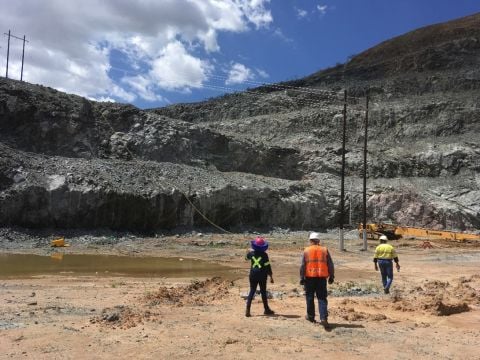 Some stretch for tens of kilometres in length, width and even depth. The size of the mines, coupled with the riches in the ground that are targeted, require town-sized populations coming on and off-site 24 hours a day, as the Earth is upheaved, moved, crushed, and divided for the valuable commodities.
Some stretch for tens of kilometres in length, width and even depth. The size of the mines, coupled with the riches in the ground that are targeted, require town-sized populations coming on and off-site 24 hours a day, as the Earth is upheaved, moved, crushed, and divided for the valuable commodities.
Moving from the rock faces through to the concentrators and beyond, one cannot help but be both impressed and intimidated by the volumes of material that is cascading through the system.
Mine sites are literally well-oiled machines, and it is easy to witness both the pros and cons that sites have on our society. However, hidden in plain sight among the hectic operations is perhaps the biggest untapped source of material that could help us in our ongoing battle with climate change. A material often perceived as having a negative effect on the environment – mine wastes known as tailings.
Negative Emissions Technologies
The means of climate mitigation that could be met here is through the implementation of “negative emissions technologies” (NETs) at mine sites. These methods aim to remove carbon dioxide (CO2) from the atmosphere, addressing one of the biggest societal challenges we face as a collective.
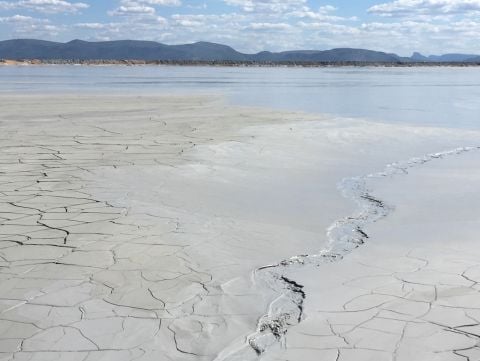 The gathering movement to NETs and CO2 removal forms part of a greater global response to limit temperature increase to well below 2 °C over the next few decades, as outlined by the Intergovernmental Panel on Climate Change (IPCC).
The gathering movement to NETs and CO2 removal forms part of a greater global response to limit temperature increase to well below 2 °C over the next few decades, as outlined by the Intergovernmental Panel on Climate Change (IPCC).
There are several possible NET methods of CO2 removal, including the advancing notion of utilising “enhanced weathering of rocks”. The method involves speeding up the chemical breakdown of rocks, a natural process that converts atmospheric CO2 into carbonate minerals or hydrogen carbonate and carbonate ions (“alkalinity”).
Basalt, a common fast-weathering volcanic rock at the Earth’s surface, has been marked as a highly appropriate rock type for both direct CO2 injection (as demonstrated by the pioneering CarbFix Project) and deployment through spreading crushed basaltic rocks on croplands. South Africa is built upon similarly reactive rocks, and the mining industry of the nation has delivered a ready-made batch of finely ground rock for any future CO2 removal strategies.
Mine waste potential
Hidden in plain sight among the hectic operations is perhaps the biggest untapped source of material that could help us in our ongoing battle with climate change.
Mine tailings, which are the leftover rock material that remains following the extraction of the targeted commodity, are typically mud- to sand-like in size, and are stored on sites in dams and containment areas. While their hazardous properties such as their associated toxicity and threat of dam burst mean that tailings have often been considered nothing more than problematic, the millions of tonnes that are annually produced may actually represent a possible environmental solution.
The key is to identify the right types of mine tailings and find the most suitable method for enhanced weathering. The principle of enhanced weathering to mimic and accelerate natural chemical weathering, whereby minerals dissolve and react with atmospheric CO2 and water (rainwater, a weak carbonic acid), with the resultant bicarbonate solutions transported to oceans by rivers, where they are stored as alkalinity. The bicarbonate products may also later precipitate as carbonate minerals. Either way, the reaction results in a net uptake of CO2 from the atmosphere, trapping CO2 on a permanent basis.
It’s all in the de-tail
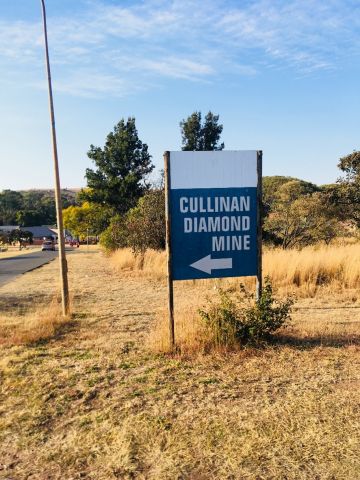 Silicate rocks such as basalt are favourable for such reactions due to their high abundance of magnesium and calcium-rich minerals, which react readily with CO2 in the natural environment. Other rocks which contain these favourable minerals and chemistry are kimberlites, which host diamonds, and layered mafic intrusions, which can contain high amounts of platinum group metals, nickel, copper and chrome.
Silicate rocks such as basalt are favourable for such reactions due to their high abundance of magnesium and calcium-rich minerals, which react readily with CO2 in the natural environment. Other rocks which contain these favourable minerals and chemistry are kimberlites, which host diamonds, and layered mafic intrusions, which can contain high amounts of platinum group metals, nickel, copper and chrome.
A number of studies have pointed to sequestration schemes at South Africa’s prominent diamond and platinum operations as a possible step towards addressing the climate crisis. Kimberlites and layered mafic intrusions host many of the expansive diamond and metal deposits of South Africa, including the world-famous Bushveld Complex, the largest layered igneous intrusion within the Earth's crust and home to approximately 80% of platinum group metal ore reserves.
The result of this wealth of resources is the production of millions of tonnes of waste material. Chemically, the waste material does not differ significantly from the original rock, making it a potentially hefty source for CO2 removal strategies. Overall, South African diamond and platinum mine wastes could represent one of the largest untouched CO2 removal sources in the world.
Getting up to speed
The problem with the natural weathering process as a practical solution to climate change is that it is a slow one, taking hundreds of thousands of years to occur and the uptake amount is dwarfed by the amount released through fossil fuel emissions. Therefore, enhanced weathering aims to speed up the chemical weathering rates such that CO2 is scrubbed from the atmosphere in meaningful quantities on human timescales, such as in decades rather than millennia.
Overall, South African diamond and platinum mine wastes could represent one of the largest untouched CO2 removal sources in the world.
The challenge of enhanced weathering is to find methods that speed up magnesium and calcium release from minerals, without producing more CO2 or other greenhouse gases. Enhanced weathering methods include crushing the material to give high reactive surface areas. The advantage of mine tailings is that the material has already been crushed to these favourable fine grain sizes during the extraction process, so this step has already been achieved.
Another possible enhanced weathering method is to increase the temperature and pressure of the reaction, but you run the risk of running up CO2 through emission intensive methods by this process. Direct CO2 stream injection (compared to the more diluted atmospheric CO2) means the rate of sequestration is less limited by rate of CO2 supply, speeding up the reaction. Additionally, biotechnologies and microbial acceleration processes may increase mineral dissolution and precipitation rates, with some additives and sorbents promoting increased reaction times. In order to speed up reactions to capture CO2 on human timescales, one or more of these methods is required. The question is – how can this be realistically achieved?
Time for action
In order to answer this question, desktop studies, laboratory experiments and site pilot schemes are required. Crucially, the time to act as now, and the mining industry recognises this. Where tailings were perhaps once perceived as a nuisance, mine companies now see the opportunity, and they are actively investigating the potential to capture CO2 at their own sites.
The time to act as now, and the mining industry recognises this.
The diamond mining company De Beers have launched their own carbon storage research project on their sites, including the kimberlite-rich tailings of their South African operations.
Their parent company, Anglo American, are working together with researchers from the Universities of Southampton, Oxford, Herriot Watt and Cambridge, as well as academic partners in South Africa, to investigate the viability of enhanced weathering methods at their Mogalakwena platinum mine site in the Bushveld Complex (GGREW Project).
The SAT4CCS project, led by researchers from the universities of Pretoria, Oxford and Cape Town, aims to assemble detailed information on tailings across South Africa. The aim is to identify the total potential for CO2 sequestration in the South African mining sector. The end-product will be a comprehensive catalogue, atlas and online database for available and suitable tailings, with recommendations for possible future CO2 sequestration project sites across the country.
The next few years will be crucial in the outcome of enhanced weathering as a viable method in the South African mining industry, requiring closer collaboration between industry, governments and scientists. Enhanced weathering of rocks at mine sites is not the silver bullet that can meet climate change targets set out in the Paris Agreement, but can form an integral part of the greater global movement to tackling climate change.
The SAT4CCS team
The ongoing database development of mine tailings in South Africa is being led by:
• Zakhele Nkosi, PhD candidate, lecturer and researcher in Applied Mineralogy and Historical Geology at the University of Pretoria, with a focus on diamond mine tailings for mineral carbonation and CO2 removal.
• Liam Bullock, Postdoctoral Research Assistant in Chemical Engineering at the University of Oxford, and member of the Greenhouse Gas Removal by Enhanced Weathering project.
• Maxwell Amponsah-Dacosta, PhD candidate at the University of the Western Cape who conducted his Masters’ research on the mineralogical characterization of South African mine tailings for the purpose of mineral carbonation.
By Yadvinder Malhi
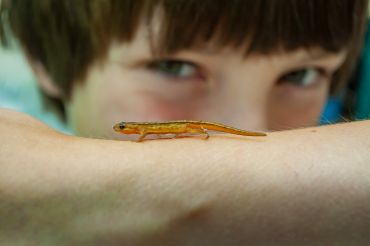 Miracles of nature in our back yards
Miracles of nature in our back yardsI’ve found comfort and fascination in becoming more aware of this community of beings around me.
This close and frequent observation of the local natural world contrasts with much of my academic research over the past few decades. Working with local partners across several continents, I have been building a monitoring network, stretching from the Congo Basin to the high slopes of the Andes, from the sun-drenched savannas of Africa to the towering trees of Borneo, to track how tropical forests respond to global change. The observations have been long-term, but because of the commitments of coordination, of university life and of family, my personal immersion in any one locale has been brief. My individual contribution has been in the big picture, synthesising insights across these diverse sites, taking advantage of a common scientific methodology that enables rigorous comparison.
I have long been inspired by the explorer and scientist Alexander von Humboldt, revered as a founding father of ecology and the environmental sciences. At the very beginning of the 19th century, Humboldt travelled the underexplored reaches of the Americas, collecting vast ranges of scientific observations, building up grand cross-disciplinary theories of how the natural world worked, engaging with local and regional politics in continents and nations brimming with new frontiers of discovery and political revolution. There is a sense of scale and excitement in his writings, of the sheer joy of discovery, that quickens the pulse and reminds me of similar moments of joyful exploration and the occasional reckless adventure.
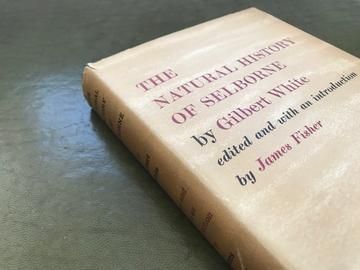 Gilbert White's classic book
Gilbert White's classic bookUnlike Humboldt’s audacious intellectual and geographical reach, almost all of White’s writings are about one very small place, the vicinity of his house and garden. White’s most famous book, The Natural History and Antiquities of Selborne, was published in the year of revolution, 1789, yet he barely mentions the wider human-political world, including the American Declaration of Independence, wars in Europe, and France and Britain struggling for domination of India. At a time when naturalists were sharing specimens and ideas across Europe, he hated to travel and suffered badly from coach-sickness. The furthest he seems to have voyaged in his entire life was to Exeter and Norwich, and the journey from Selborne House to Oriel College was one of his few regular journeys. Nor did he venture into grand Theories of Nature. As an ecologist more easily attuned to the Humboldtian tradition in both my curiosity for discovering large-scale patterns and my love for exuberant tropical nature, I felt a little underwhelmed by White at first.
White’s writings are about one very small place, the vicinity of his house and garden.
Yet I came to appreciate the immense value of his approach as a counterpoint to planet-spanning snapshots. White wrote in detail about such things as plants, birds and worms, patiently observing the flowering times of plants, the migration patterns of birds, even the hibernation routines of his pet tortoise Timothy, purely for the joy of understanding them. He seems to have been the first to write so prolifically and empathetically about the behaviour of animals. He thought many naturalists were too desk-bound, and too focused on the anatomical study and categorisation of dead specimens rather than understanding the intricate and detailed stories that nature had to tell:
Faunists … are too apt to acquiesce in bare descriptions, and a few synonyms: the reason is plain; because all that may be done at home in a man’s study, but the investigation of the life and conversation of animals, is a concern of much more trouble and difficulty, and is not to be attained but by the active and inquisitive …
White wrote in detail about such things as plants, birds and worms, patiently observing the flowering times of plants, the migration patterns of birds, even the hibernation routines of his pet tortoise Timothy.
What White’s astute observational eye revealed was an understanding of animals as beings in themselves, with rich inner lives and complex behaviours, wants and needs. He laid open the wonder of a world in which creatures existed for their own purposes and needs, not as accessories to the drama of human history, but as vital, aware, self-motivated entities, ‘nations’ in themselves.
One example is the migration of birds, which he described as ‘a winged nation’. In the 18th century, it was a mystery what the swallows, martins and swifts, along with other birds that appeared only over the summer months, did during the winter. Did they bury themselves underground? The idea that such small animals flew off to the distant and exotic lands of Africa seemed inconceivable. Although White’s observations didn’t prove the migration idea, they revealed its possibility, and affirmed that there was no evidence that birds buried themselves and disappeared:
But in nothing are swifts more singular than in their early retreat … This early retreat is mysterious and wonderful, since that time is often the sweetest season in the year … Are they regulated in their motions with us by failure of food, or by a propensity to moulting, or by a disposition to rest after so rapid a life, or by what? This is one of those incidents in natural history that not only baffles our searches, but almost eludes our guesses!
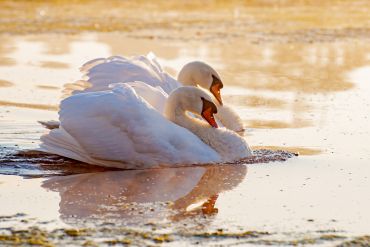 A pair of swans
A pair of swansOne demonstration of his ecological mindset, his awareness of the connections between beings, and how even the most unglamorous of beings can play important roles, is his regard for the humble earthworm when most contemporary opinion regarded it as an ugly-looking pest:
Earthworms, though in appearance a small and despicable link in the chain of Nature, yet, if lost, would make a lamentable chasm … worms seem to be the great promoters of vegetation, which would proceed but lamely without them.
White’s empathy with the inner lives of other species, married with the emerging scientific values of meticulous observation, record-keeping and quantification, was something new.
To see humanity as but one member of a community of animal and plant ‘nations’ is intrinsic to many indigenous world views, including those of Europe. However, this way of seeing retreated in prominence in medieval Europe, and was further diminished by the elevation of the power of reason in the Enlightenment, which enhanced a sense of human superiority over Nature. White’s empathy with the inner lives of other species, married with the emerging scientific values of meticulous observation, record-keeping and quantification, was something new. His observations and writings made a quiet, patient beginning to a revolution that would eventually shake the foundations of our understanding of humanity’s place in the natural world.
The door that White eased ajar through his acute observation was one that Charles Darwin, Alfred Russel Wallace and others would throw wide open. Darwin, who was born 16 years after White’s death, described White’s writings as a key early influence that had deeply impressed him. When Darwin published On the Origin of Species (1859), the decentring of the human that White had inadvertently begun took a huge leap forward. Humans were not only one part of a community of beings, we emerged and evolved from the ecological and evolutionary webs of connection that weave that world together. And, in the subsequent decades, the whole few-thousand-year span of written human history would come to be understood as floating on a deep ocean of Earth time and evolution, thousands of millions of years deep, that’s unfathomable and almost incomprehensible in its scale.
I believe that the greatest challenge of our age is how we as a species and a civilisation overturn the assumption that human history and social and economic progress can be divorced from the natural world and its webs of interdependence.
The journey that White began, to change our self-understanding, recognising that humans are embedded in a wider natural world, remains incomplete. I believe that the greatest challenge of our age is how we as a species and a civilisation overturn the assumption that human history and social and economic progress can be divorced from the natural world and its webs of interdependence. This assumption is being acutely challenged, and its contradictions revealed as our civilisation approaches the planet’s biophysical boundaries, driven by our relentless quest for ever-increasing material consumption, production efficiency and economic growth.
Returning to Wytham Woods, I watch a different pandemic at work. Ash trees, one-third of the trees in these woods, are dying of a fungal infection. Such diseases are becoming more common in a world of increasingly connected trade. Every decade is warmer than the last, spring is earlier and the weather more erratic. The web of life is shifting and reweaving in complex ways, in some cases showing resilience and adaptability, in others precarious vulnerability. It’s more important than ever to understand and watch our local natural world closely for augurs of the changes to come. And this can be done only by meticulous observation by those people, often amateurs rather than professionals, with the patience and passion to learn to read and understand nature’s secret codes. At the level of international science, Humboldtian snapshots are increasingly being criticised as ‘helicopter science’; more valuable is long-term partnership and support for local expertise. What’s needed is that local expert or teacher who has the knowledge (or potential knowledge if given the chance) and the locally embedded dedication to do the close observation. In the schools and universities of the tropics, there are thousands of Gilbert Whites waiting: passionate observers of local nature that are so needed and so ready to contribute, if only given the encouragement and opportunity.
Humility and appreciation are made possible by acute observation, empathy and delight in the mysteries and quirks of other species, qualities that White reveals in his writings.
Addressing the profound challenge of global environmental change is complex and multifaceted. But one certainty is the need for a change of world view, the fostering of humility towards the natural world and its shared community of beings. Such humility and appreciation are made possible by acute observation, empathy and delight in the mysteries and quirks of other species, qualities that White reveals in his writings. Whether we make those observations ourselves in the field, or as readers of the nature writings of others, or even as awe-struck participants when we sit down to watch David Attenborough’s joy and delight in his latest programme, we’re all direct heirs of White and his approach to seeing the world. The door to a new way of seeing and humility that he helped to ease open is one that’s led us down a long and unexpected path of ever-deepening understanding of our place in the natural world. Together, we must now collectively walk through that doorway and work out where the path leads.
This article was originally published on Psyche (psyche.co).
Yadvinder Malhi is Professor of Ecosystem Science at the University of Oxford, programme leader of the Ecosystems Group at the Environmental Change Institute at Oxford, Jackson Senior Research Fellow at Oriel College, Oxford, and director of the Oxford Centre for Tropical Forests.
- ‹ previous
- 24 of 248
- next ›



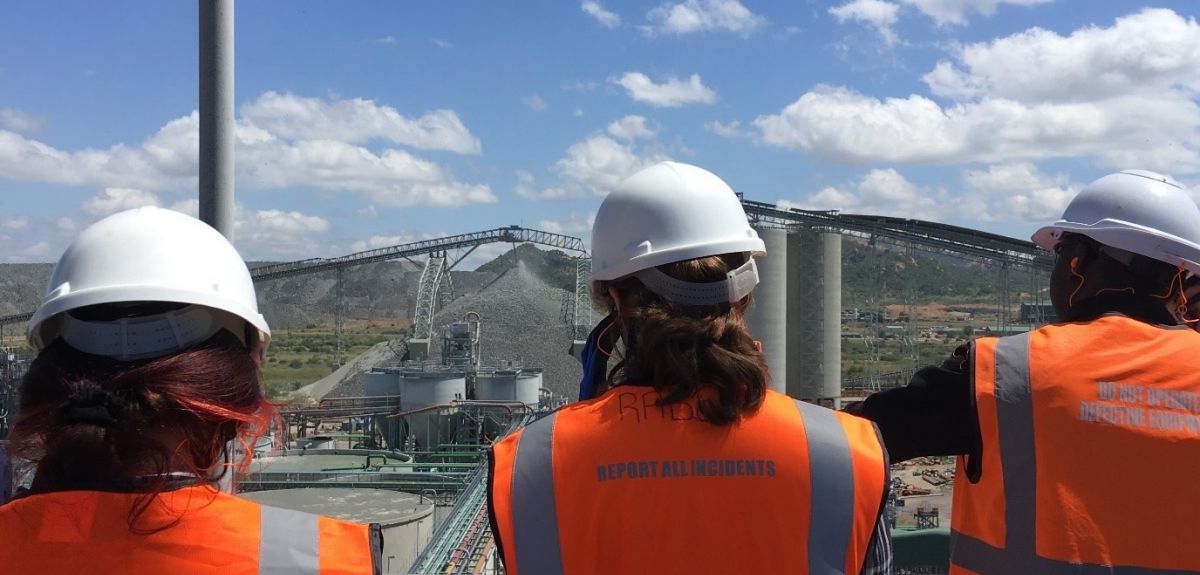
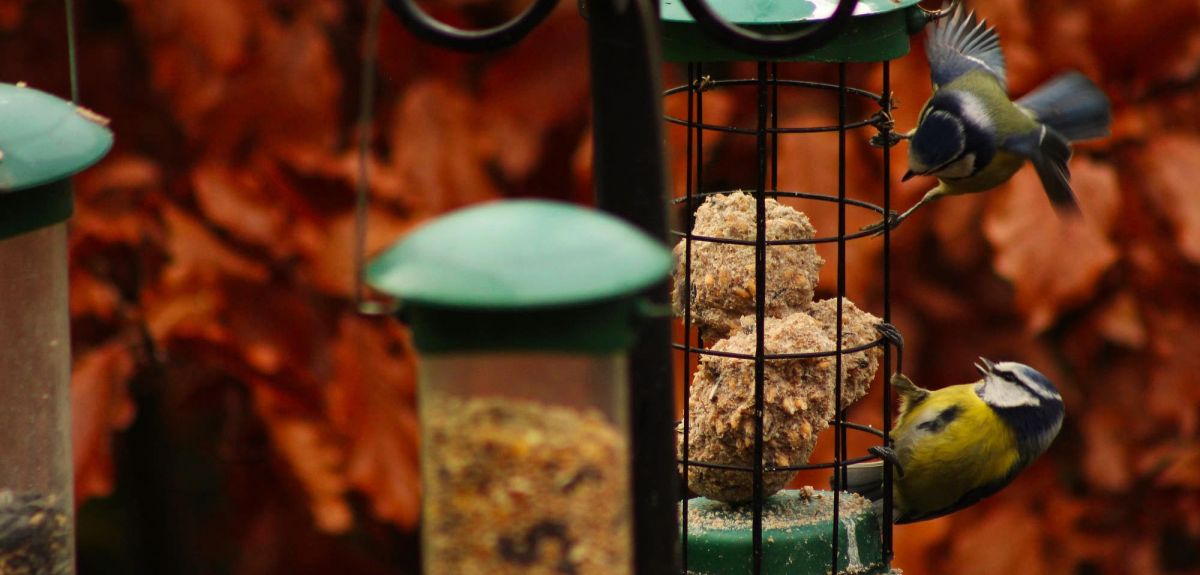
 The Oxford students at the forefront of the fight against microbial resistance
The Oxford students at the forefront of the fight against microbial resistance  The hidden cost of AI: In conversation with Professor Mark Graham
The hidden cost of AI: In conversation with Professor Mark Graham  Astrophoria Foundation Year: Dr Jo Begbie reflects on the programme’s first year
Astrophoria Foundation Year: Dr Jo Begbie reflects on the programme’s first year World Malaria Day 2024: an interview with Professor Philippe Guerin
World Malaria Day 2024: an interview with Professor Philippe Guerin From health policies to clinical practice, research on mental and brain health influences many areas of public life
From health policies to clinical practice, research on mental and brain health influences many areas of public life From research to action: How the Young Lives project is helping to protect girls from child marriage
From research to action: How the Young Lives project is helping to protect girls from child marriage  Can we truly align AI with human values? - Q&A with Brian Christian
Can we truly align AI with human values? - Q&A with Brian Christian  Entering the quantum era
Entering the quantum era Can AI be a force for inclusion?
Can AI be a force for inclusion?